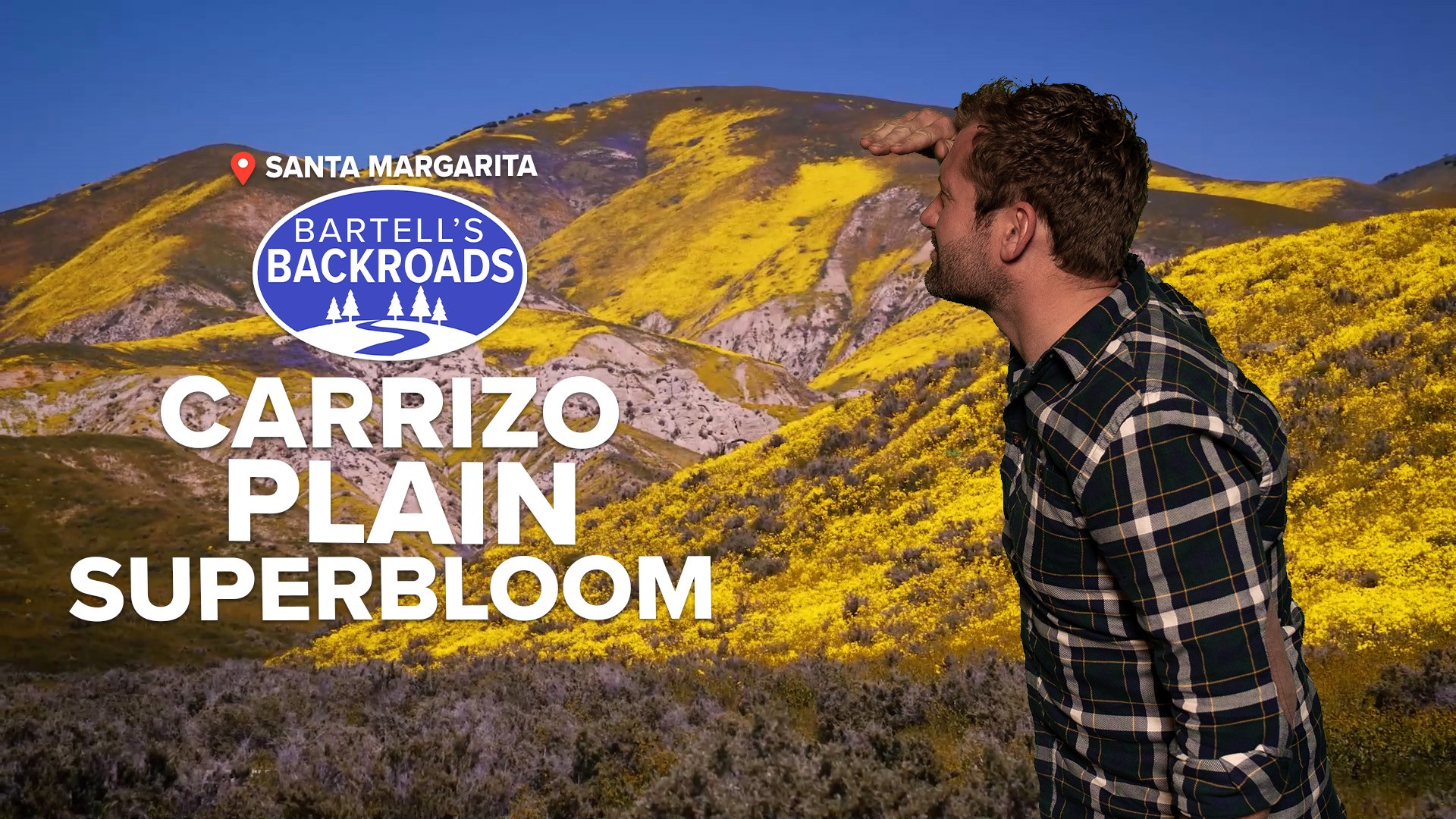SANTA MARGARITA, Calif. — To really experience the sights, the sounds and smells of a "super bloom" at Carrizo Plain National Monument, you have to visit in person. At over 200,000 acres of protected grass land, it is one of the largest in the state.
To the east of its boundaries stands a sea of Kern County oil fields, and to the west are the crowded coastal towns of San Luis Obispo County.
Carrizo Plain is the kind of place you go to get away from and to smell the flowers. Johna Hurl with the Bureau of Land Management can name them all.
“This Hillside Daisies follow the sun, then we have the Tidy Tips and this is a Filaree,” said Hurl as she gestured toward the lush carpet of wildflowers covering the area.
The reason the wildflowers grow so well in this area is because of its remoteness. Long before it was designated a national monument, Carrizo Plain was a sacred place for Native Americans. Images on this outcropping known as Painted Rock date back 3,000 to 4,000 years.
“Painted Rock is a place used by the Chumash Tribe as a ceremonial area and it has pictographs on the rocks,” said Hurl.
Painted Rock is off limits most of the week to preserve the pictographs, and also to protect the wildlife like burrowing owls and the endangered Kangaroo rat which dig large holes in the ground right outside the visitors center.
“They're about about 100 to 120 grams (4.2 ounces)," said Hurl. "They are nocturnal, so they come out at nighttime, and they will be up here hopping around."
TAKE A TRIP ON BARTELL'S BACKROADS:
► See an interactive map of everywhere John has visited on the backroads
► Watch all of the Backroads videos
► Follow John on Facebook
In the late 1800s the land was taken over by farmers who planted wheat in the dry soil and used giant harvesters to work the fields. A successful crop was dependent on the rain. There’s little to no groundwater under the arid soil.
“Farming was all based on rain, so some years you got a good crop. Others you didn’t, it was boom or bust,” said Hurl.
The little bit of water that does flow into the monument can be found in Soda Lake, but it is not drinkable and under the hot summer sun it doesn’t last long.
“Soda Lake is an internal basin. A lot of the salts leach into the lake and when it evaporates, it leaves behind sodium,” said Hurl.
As farming became less profitable in the area, much of the land was sold to conservationists and the federal government. President Clinton designated Carrizo Plain as a national monument at the end of his term in Jan. 2001, and then the wildflowers and native plants began taking over again.
As the sun rises over the valley floor, the flowers follow its rays. First to glitter bright with color are the low-lying flowers. Then, as noon hits, the hills and mountains come to life.
“I will come to work in the morning and not notice them and then later in the day they are just vibrant,” said Hurl.
Those mountains are what isolate Carrizo Plain. Formed by tremors and quakes, the mountains are a result of the San Andreas fault, which runs through the monument.
“The fault moves two inches a year but we get major earthquake events every 200 years, and the ground can move 30 feet one way and three in the other,” said Hurl.
Wildflower season is short, only lasting a few months during the spring and pictures don’t do this place justice. It's a place you really need to experience in-person to appreciate.
GET IN TOUCH WITH NATURE ON THE BACKROADS: Head to the Lost Coast to find the Sinkyone Wilderness, where a bumpy ride will get you a look at one the state's most remote and untouched parks.



















